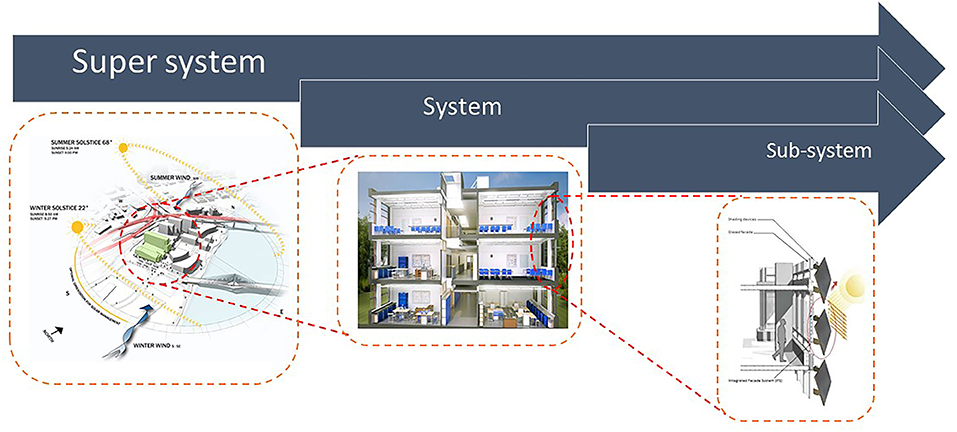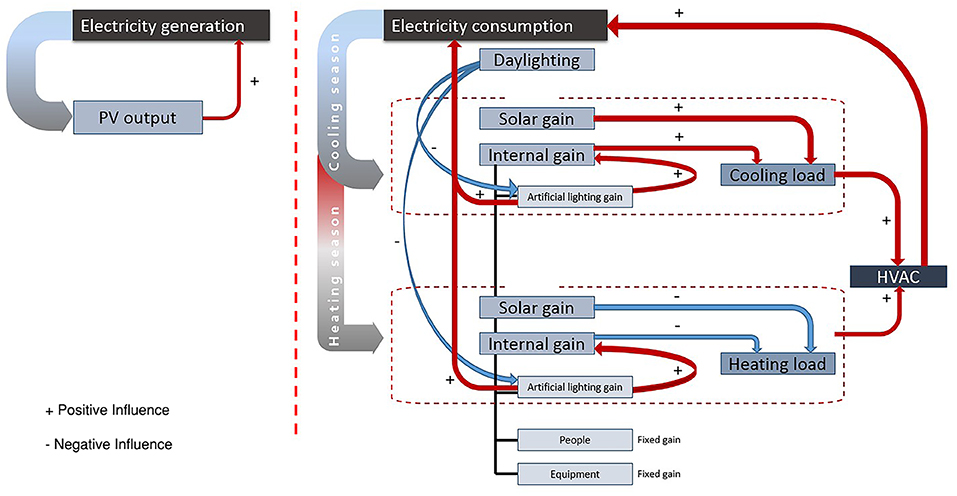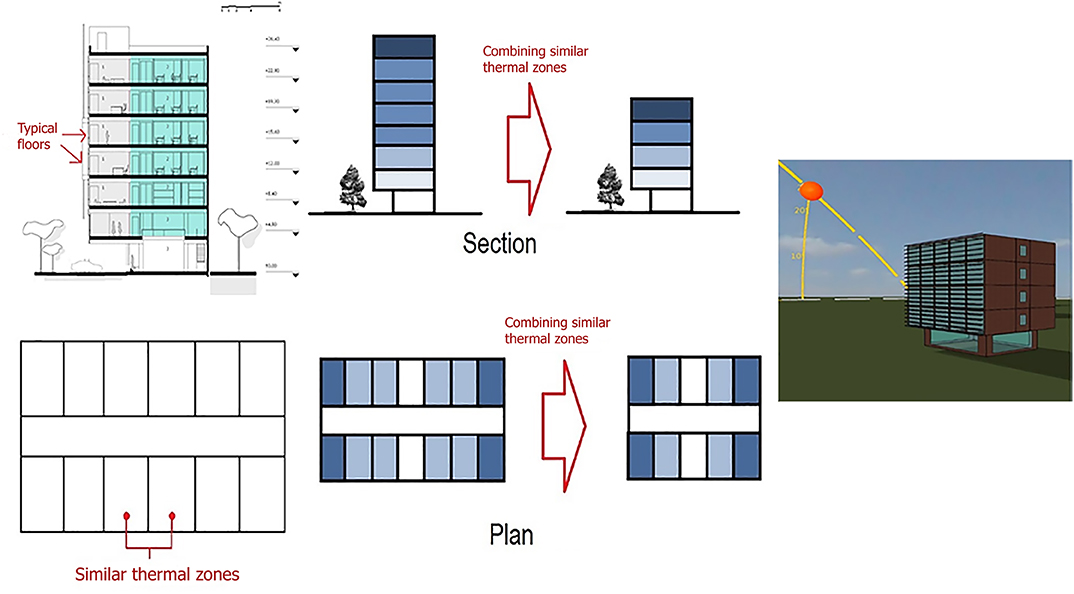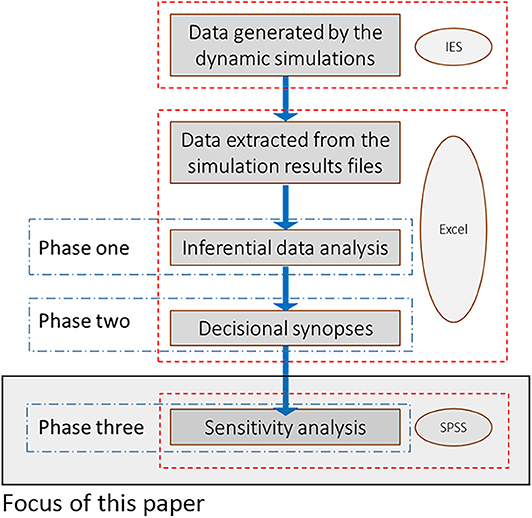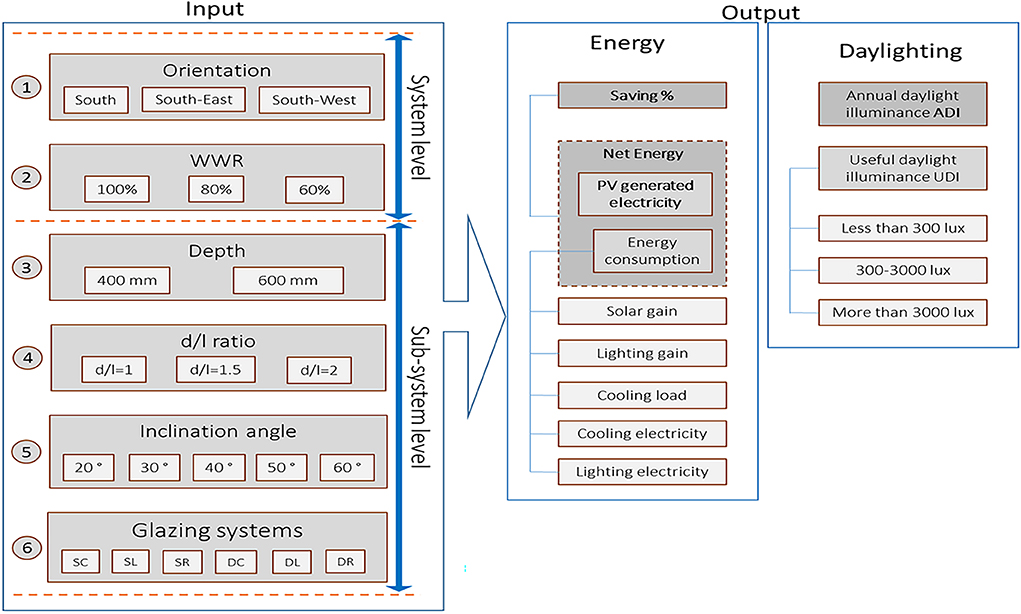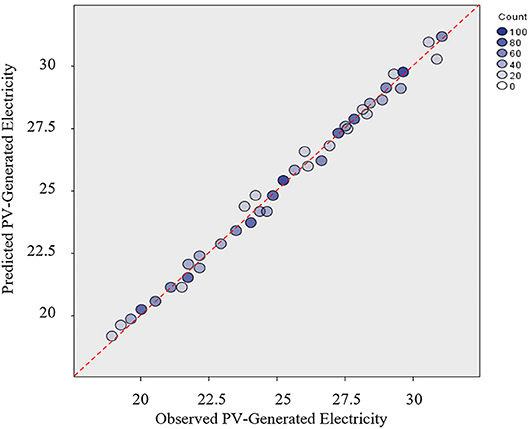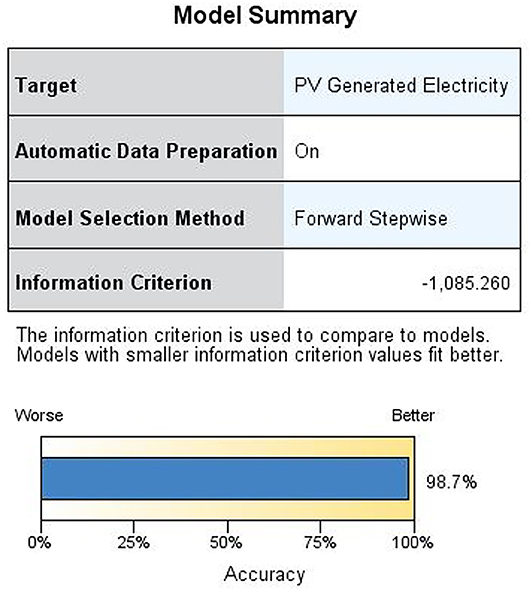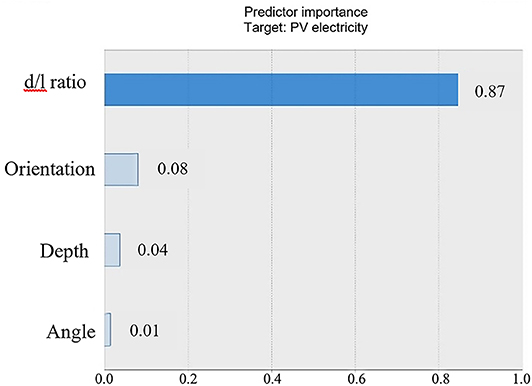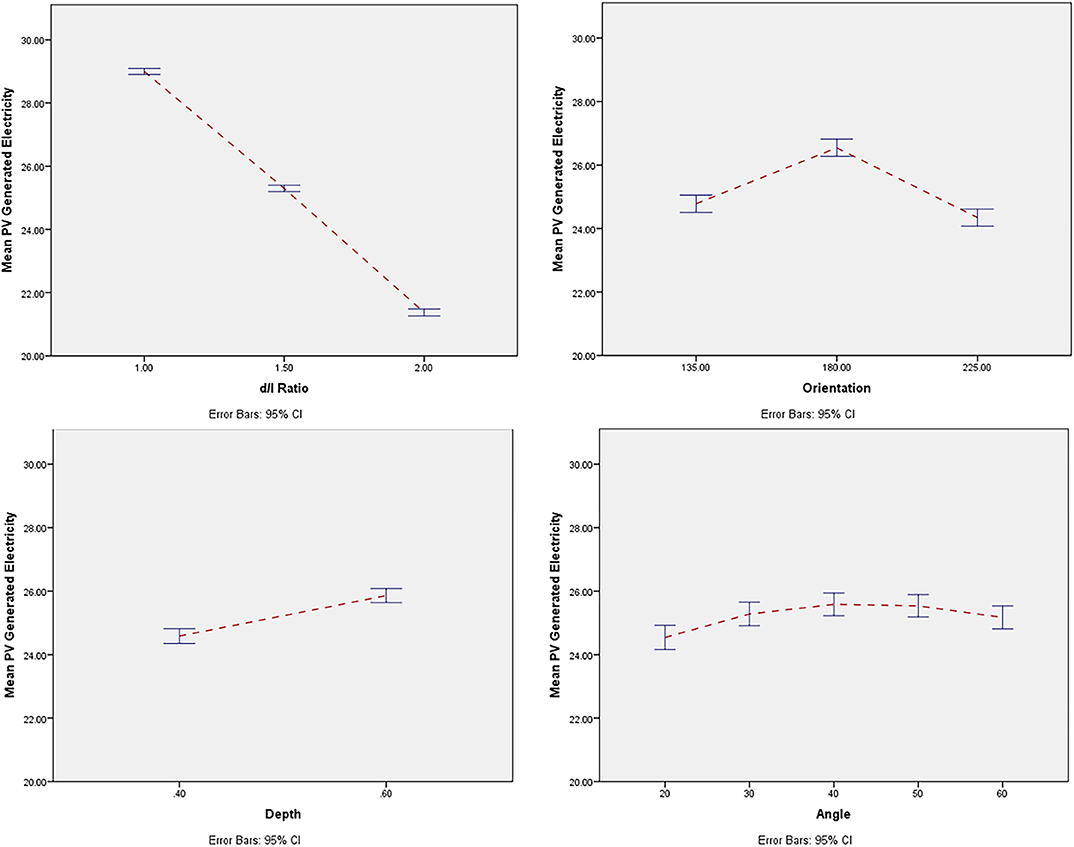- 1Department of Architectural Engineering, University of Technology-Iraq, Baghdad, Iraq
- 2School of Environment and Technology, University of Brighton, Brighton, United Kingdom
- 3NONAMES Design Research and Studies, San Diego, CA, United States
- 4Digital Architecture and Fabrication Program, NewSchool of Architecture and Design, San Diego, CA, United States
- 5School of Real Estate and Land Management, Royal Agricultural University, Cirencester, United Kingdom
The need for more responsive built environment in the age of climate change has led building professionals to resort to integrated design solutions where a combination of different technologies is utilized to improve what traditionally the tectonics of a building were expected to fulfill rather independently. One of such solutions are Integrated Façade Systems (IFS), which deploy different technologies in or related to building façades to improve building performance. To measure the efficiency of such solutions, three broad categories of methods are in use, namely real, scaled or mock physical models, mathematical models and simulations of which the latter is the most time- and cost-efficient and depending on the platform can provide the most user-friendly method. The flexibility, ease of use and broader coverage of Building Energy Simulation (BES) tools make them a more viable alternative. Developing a benchmark or a base-case model against which the impact of parametric changes of the IFS can be measured is the first step in BES and bares high importance on methodological reliability and validity of the results. This paper uses a specially devised methodology to develop a base-case model for BES of highly- to fully-glazed office buildings in hot and arid climates. BES results of the energy production of the base-case and over 1,600 parametric combinations of the model's system and sub-system levels variables have been used to perform a sensitivity analysis to test the robustness of the results. The results presented in this paper form the last phase of a three-phased analysis of a comprehensive research, designed to provide a full account of how different combinations of a set of variables can and will influence energy performance of highly- to fully-glazed office buildings in hot and arid climates.
Introduction
The construction sector is accountable for around half of energy consumption, greenhouse gas (GHG) emissions, and depletion of natural resources worldwide (Dixit et al., 2012; Pomponi et al., 2016b). Within the non-domestic sector, offices alone consume around 40% of energy (Pérez-Lombard et al., 2008; Pomponi et al., 2016a). Building façade is one of the major components of a building with direct impacts on its energy consumption and indoor comfort conditions where architectural design expressions also materialize. Integrated design has been shown to have a 60% reduction in global warming potential (GWP) and 62% in energy consumption in LEED certified selected case studies in Canada (Leoto and Lizarralde, 2019). Integrated Façade Systems (IFS) can be classified as façade systems where different technological solutions are incorporated to improve the façade performance and lower building's environmental impacts. They can offer positive impacts on the environment and play a major role as an integrated and holistic building design strategy. Better control of heat gain, thereby air-conditioning loads can be administered, and glare control while the use of natural light is maximized are but just to name a few advantages IFSs can potentially offer (Ibraheem et al., 2017b; Taveres-Cachat et al., 2017; Yoo, 2019). Incorporating High-Performance Glazing (HPG), Shading Devices (SD), and Integrated Photovoltaics (IPV) are some of the most effective strategies in designing IFSs. Despite growing importance of these technologies, the research in this area is still relatively limited (Taveres-Cachat et al., 2017). It is even more so for non-residential buildings with highly- to fully-glazed façades in hot and arid climates. Moreover, there is a major gap with regards to systemic and parametric studies on IFS where façade solutions can be configured to best serve the specifics of different geographical locations, site parameters, building and component factors alongside other. To address this gap, this paper seeks to achieve the following goals:
1. To devise a base-case model as a benchmark to facilitate formulation of possible different parametric combinations of variables to test the impact of change of façade elements on the selected building performance features.
2. To establish and test out a statistical method to measure and weigh the impact of change of those parameters on output performance variables so that evidence-based decisions can be supported.
Literature Review
This section sets out to establish the boundaries of this paper to develop an approach to systematically investigate the influential factors in the design and configuration of façade systems. Therefore, Building Energy Simulation (BES), available and suitable simulation tools, approaches to establishing benchmarks, and Sensitivity Analysis methods have been reviewed as of the following sub-sections:
Building energy performance can be analyzed dynamically through Building Energy Simulation (BES). BES is widely used to understand the relationship between the design parameters and energy behaviors of a building for building performance assessment and design (Ayyad, 2011; Kim et al., 2012; Awadh and Abuhijleh, 2013; Namini et al., 2014; Lamnatou et al., 2015; Yip et al., 2019) by both researchers and building design or services practitioners. BES provides a reliable, affordable and time-efficient alternative to physical mock-ups, and real building testing (Hui, 1998; Anderson, 2014), and is more user-friendly, more agile, more flexible and faster than mathematical modeling.
To simulate energy performance of a buildings, various simulation tools exist including but not limited to BLAST, BSim, DeST, DOE-2.1E, ECOTECT, Ener-Win, Energy Express, Energy-10, EnergyPlus, eQUEST, ESP-r, IDA ICE, IES-VE, HAP, HEED, PowerDomus, SUNREL, Tas, TRACE, and TRNSYS as compared and analyzed by Crawley et al. (2008). Their study covers modeling features, zone loads, building envelope, daylighting and solar gain, infiltration, ventilation and multi-zone airflow, renewable energy systems, electrical systems, HVAC systems, emissions, economic evaluation, climate data availability, results reporting, validation, user interface, interoperability, ease of use and availability. Others, such as Attia et al. (2009) and Attia (2010) have used a more intuitive or as indicated by the researchers an “Architect-friendly” analysis of BES tools and Azhar et al. (2009) who compared software packages that are considered BIM-based tools used for very complex processes of sustainable design, such as daylighting, solar access and renewables. In both studies IES-VE has been regarded as a powerful dynamic simulation tool which is widely used by different researchers (e.g., Ayyad, 2011; El Sherif, 2012; Kim et al., 2012; Awadh and Abuhijleh, 2013, to name but a few). Moreover, the modular construct and new capabilities of IES-VE allows for parameterization of the thermal performance, day-lighting, artificial-lighting analyses as well as PV-generated electricity under a single suite of a software application which ensures consistency, reduces the risk of double-counting and any other discrepancies or compatibility problems which may arise as a result of software interoperability issues.
To be able to devise and carry out a systemic study on IFSs using BES, the first step is to develop a building prototype; what is also known as a base-case or a benchmark scenario. Its most important feature is its flexibility and customizability so that it allows for development of different combinations of the façade components, considering the unique set of possibilities and limitations of the context of the study. The use of office prototypes dates back to 1990 where the effects of shading devices on energy performance were investigated (Leighton and Pinney, 1990), which allows for detailed analysis of energy measures at building scale (Torcellini et al., 2008). Leading research institutions, such as U.S. Department of Energy (DoE), Lawrence Berkeley National Laboratory (LBNL), Pacific Northwest National Laboratory (PNNL), and National Renewable Energy Laboratory (NREL) have developed such models. EWC (2012) developed a protype that represents 70% of offices in the United States which have been used to investigate thermal and visual performance of fenestration systems (Carmody, 2004; Haglund, 2010). However, those models are specific to their context hence cannot be applied to similar studies in other contexts. A context-specific representative model is therefore needed in order to represent real practices in a certain context. Development approaches of representative buildings have been devised and applied. Earlier attempts used standardized offices to provide details about the building envelop (Leighton and Pinney, 1990), whereas others focused on grouping benchmarks based on their ventilation type and layout (EEBPP, 2000), or into five categories based on urban context, structure, construction materials, envelope systems or internal layout (Dascalaki and Santamouris, 2002). A more comprehensive review of the literature on developing benchmarks for energy simulation purposes has been carried out by Pomponi and Piroozfar (2015). In places where data or precedent studies are not available or accessible, devising benchmarks could be achieved by conducting a questionnaire survey on buildings in order to realize a prototype model to represent the buildings (Hernandez et al., 2008).
The approach developed for this study builds on comprehensiveness and inclusiveness of a wide variety of parameters where the methodology aims to develop a full parametric combination of such variables. The main influential parameters that affect the performance of buildings with PV integrated shading devices (PVSDs) in IFS settings were reviewed by Ibraheem et al. (2017a). The authors distinguish in PVSD two design sub-categories: design considerations and design configurations and apply this separation at context level (latitude and geographical location), building level (orientation and component function) and building envelope scale (design of the shading system). Design considerations are the factors over which there is limited to no control, but they need to be taken into account when the design process of building or the course of façade is being carried out. Design configurations, by contrast, are those elements which can be adjusted, changed or manipulated by the designer and are accounted for as a part of the project that can be shaped by the design process.
Various criteria for performance evaluation of PVSD have been developed by several researchers (Mandalaki et al., 2012), mostly with the aim of identifying the optimum PVSD configurations improved energy efficiency and visual comfort. However, the performance evaluation of PVSD could be a decisive factor because any decision is made based on a set target which is supposed to be met. Therefore, the purpose, target and deliverables intended for the study should be stated clearly from the beginning to avoid any further confusion or misleading. Electricity production (PV output) has been a reliable indicator, especially when combined with other criteria, such as visual comfort (Mandalaki et al., 2014a), electricity cost (Bahr, 2017), energy consumption improvements (Karteris et al., 2014) or the amount of PV-generated electricity that could contribute to artificial lighting (Mandalaki et al., 2014b). The benefits of energy production, or what is referred to in this study and similar studies as “PV-generated electricity,” could be maximized when the energy behavior of the studied buildings with applied PV installations are to be assessed individually without considering other indicators, to allow for emphasizing the effect of PV on the energy consumed by the building, heating and cooling loads or visual and thermal comfort. It is even more useful when multi-criteria assessment is intended where factors, such as cooling and heating loads of inner space, electricity needed to ensure visual comfort, electricity production of PV panels and the factor of visual comfort, i.e., the ratio of electricity produced by PV to the electricity needed for visual comfort are considered (Sun and Yang, 2010; Mandalaki et al., 2012; Sun et al., 2012; Bahr, 2013).
Due to increasing level of complexity of this study, it requires a proportionate statistical method to facilitate measuring the impact of changes in input variables on output variables. Sensitivity Analysis (SA) is a robust tool which has been used by other researchers (e.g., Hamby, 1994; Frey et al., 2003; Tian, 2013; Nguyen and Reiter, 2015, to name but a few) to monitor the significance of input parameters (in this study, design parameters) and quantify the impact of the change in those parameters on output parameters (in this chapter, energy production). SA can be used as a mathematical, statistical (or probabilistic) and graphical assessment tool (Frey et al., 2003). It can also take a local, global or screening analysis stand (Heiselberg et al., 2009), of which, the latter is what is most commonly used in BES studies (Tian, 2013; Nguyen and Reiter, 2015). Coupling Sobol index and Morris's SA method with uncertainty, other researchers have attempted to compensate for input parameters variation where data has not been available (Hopfe and Hensen, 2011; McLeod et al., 2013). In the absence of the ranges of variation of input parameters, Latin Hypercube Sampling (LHS) method has also been used to generate the input data variation ranges. Yip et al. (2019) use a variance-based ANOVA global sensitivity analysis method for both main and interaction effects. Standardized Rank Regression Coefficient (SRRC), by contrast, has been used as a quantitative measure of sensitivity where the data variation range is known. Once the SA is measured and determined, the relationships and the relative importance of design parameters can be understood, and the building performance can be improved most effectively and most efficiently by focusing on the more important design parameters.
The findings of this literature review will be used in the following sections to set out the methodological approach of this research. The selected SA method will be applied to a sample of results to demonstrate how the methodological choice for analysis of results fulfills the intended objectives of this research.
Research Design and Methodology
Due to the nature of this research, modern “Systems Theory” has been utilized to devise a research methodology whereby systemic application of building science to building performance (Kesik, 2014) is facilitated. Such an approach is not unprecedented and has been used by others, e.g., Piroozfar (2008) who have used it to investigate building envelope as “system,” building as “super-system” and façade components as “sub-system” to study customization in the AEC industry and Farr et al. (2014) who have done so for application of BIM to facilitate a fully customizable façade system, but is unprecedented in parametric studies of building performance analysis using BES. This methodological approach has a series of advantages which makes the research applicable to both theory and practice. Furthermore, it has also been used to conduct a comprehensive systematic review of literature, without which this task would have been very difficult if possible, at all. This systemic approach will also make possible classification of the impact of change on different output parameters at different system levels. It further facilitates the decision support for design and technical interventions, and practical applications of IFSs for building, façade and design professionals.
According to the devised methodology, the classification of the body of literature about PV as shading devices was carried out and three different systemic areas were identified as: performance aspects, assessment methods and design considerations/configurations which are not mutually exclusive (Figure 1). The systemic view was then applied to define the building level as the core “system,” with an upper systemic level, or “super-system” level, including the context in which building exists, such as site, geographical location, climate (micro and macro), etc. and a lower systemic level, that is “sub-system” level, which involves the building façade with its associated compartments and elements (Figure 2).
Same methodological approach has also been used to develop a base-case model where variables at system and sub-system levels has been defined according to the findings of the literature review and the system levels defined for the building. It was of paramount importance to stay closely on target with this methodology throughout the entire study so that no inconsistency and mis-alignment occurs in any of the stage which could have rendered the findings of this research or their applications void. Energy simulation of different scenarios have been conducted to validate and test the base-case. To demonstrate the impact of changes of input variables on output variables, e.g., energy generation, energy consumption, and daylighting, SA has then been carried out. In this paper, only energy production of photovoltaic shading devices (PV-generated electricity) has been chosen as a representative indicator to which sensitivity analysis has been applied. The model development will be elaborated later on in the data generation section as a part of development process of the research instrument.
It is important to note that in SA, the interdependency of the input and output variables is essential to ensure that (i) all the variables are taken into account; (ii) none of the variables is unduly represented; and (iii) none of the variables are double-computed. Figure 3 demonstrates the interdependency of the variables in this study through which the abovementioned three points were achieved.
Data Generation
This study has concentrated on mid-sized highly- to fully-glazed office buildings with an internal cellular layout, separated by a central hallway of 2.0 m wide. Dimensions of each office (or “thermal zone” in BES) are 4 × 6 × 4 m [WxLxH(floor-to-floor)]. The ratio of built to land plot area is between 40 and 60%. The ground floor layout is sitting back off the edges of land plot unlike the rest of the above floors which fill the layout. The entrance of the building is at the middle of the front façade facing the main street. This model was developed based on both the general local building and planning regulations complemented, in those areas which are open to design decision, by the results of a remote survey carried out between Nov 2016 and Feb 2017, distributed via email, social and professional media and local Professional, Statutory and Regulatory Bodies (PSRBs) to 88 professionals. 72 responses were received, and the final number of valid responses was 65, which indicates a 74% response rate due to purposive snowball sampling strategy utilized. The authors' professional experience, expertise and local knowledge were used to excerpt the relevant planning and building regulation to devise the draft version of the model and also to develop the initial questionnaire. In addition to the expert knowledge and the survey outcomes, findings from the literature related to modeling of a benchmark or a base-case model were also reviewed and used, within the systemic framework of this study, for the development of the base-case model.
Few simplifications had to be made to the final model in order to avoid unnecessary complications of the model and to increase the accuracy of the intended results of the simulations (Figure 4). This way, the variations which had no impact on the thermal performance of the building, such as the vertical access (stairs and lifts) and the wet zones (toilets) on each floor were not included in the model. This was because reaching any consensus on these features through the design survey was not possible due to the variations, they may have from one design to another. Similar approach has been utilized for developing benchmarks, by other researchers, such as Pomponi and Piroozfar (2015). On another level and from a simulation point of view, one representative of each unique thermal zone would suffice for an accurate and detailed simulation run. The common practice in building physics is therefore, to omit similar thermal zones (vertically and horizontally) to the point that the model includes only one of each unique thermal zone. This common practice formed the basis for another round of simplification which will have significant positive impact on saving time and adding to the accuracy of simulations (due to cutting back on repetition) but no negative impact on comprehensiveness, validity or reliability of results.
After trialing AutoCAD and Sketchup, ModelIT-IES, a plug-in in IES-VE, was used to model geometry which saved time and problems pertaining to software interoperability. LBNL Window 7.5 was used to create the glazing systems, which were then imported to APcd-IES and added to the model. APcd-IES was also used to assign construction materials to the external walls and the internal partitions. The geographical context of the study was Baghdad City, Iraq as a representative of hot and arid climate where average temperature is 22.8°C, max temperature is 43°C and over 2,300 KWh/m2 of horizontal irradiation per year (Al-Helal, 2015), hence Baghdad weather files were used accordingly to set up in APLocate-IES for feeding into Apache, Radiance, and SunCast. Radiance-IES was the plug-in in which the optical properties of the glazing systems were set up. APpro-IES was used for setting the occupancy profiles, internal gains, HVAC systems, dimming profiles, weekly and daily profiles. The total number of models with all the combinations of variables is 1,620. These models have been run in: (1) SunCast for solar shading calculations; (2) Radiance for illuminance calculations, and then the results of those runs have been integrated in: (3) Apache for dynamic thermal simulations. This brings the total number of simulation runs to 4,860 altogether. All simulations results are organized in Tasks-IES1. The base-case model was first run without any IES configuration to establish the benchmark for comparison, where, for instance, the energy consumption of the base-case was recorded as 195.6702 MWh. 4,860 simulations were run in batches on six computers and the results were organized in VistaPro-IES to be used for analysis in Microsoft Excel™. Finally, a database was prepared for running sensitivity analysis using IBM SPSS™. The new advanced and integrated features accessible through new IES-VE plug-ins, although sometimes not very straightforward to deploy, was definitely worth it as it meant that most of the potential software interoperability issues, which could have been faced at later stages of the work, were avoided.
Data Analysis and Results
A three-phase method has been designed to analyse, in detail, all assessment indicators which are under investigation in this study. Phase one starts with inferential data analysis and is followed in phase two by a series of decisional synopses which is then concluded with Sensitivity Analysis (SA) in phase three (Figure 5). The third phase is the focus of this chapter.
Firstly, the systemic approach devised in this study was used to classify all the variables under investigation. The process of limiting the number of variations for each parameter is backed up by a series of methodological steps starting from a critical comprehensive review of the existing literature, followed by a professional practice survey, then a systemic research on the production and supply of building materials and components for PVSDs and concluded by the first test run of simulations to eliminate some of the combinations which are either having limited to no impact on the results, are not common practice or do not make sense in terms of design practices in building facades or PVSDs. Variables were then clustered systemically, where Orientation and Window to Wall Ratio (WWR) were the system level variables; followed by d/l (d = depth of the PVSD and l (l = distance between the PVSDs), angle of inclination and glazing systems as sub-system variables. This is shown in Figure 6.
The same steps were followed for each of the output parameters in this phase. They consist of energy performance indicators, i.e., electricity consumption, solar gain, artificial lighting gain, cooling load, PV-generated electricity, net energy and energy saving, as well as daylight performance indicators (UDI300−3000 lux) for the daylight sensitivity analysis.
In this paper, only electricity production (PV-generated electricity) will be presented. IBM SPSS™ was used for data analysis, where the types of variables were first set up to then follow by application of variable interdependencies. Nominal variables were independent variables while all scale variables were dependent variables. For each variable then, the “measure level” was specified. The input variables represented the predictors for which importance graph was plotted. This would indicate the sensitivity of the output variables when the input variables change, while at the same time, the change of other input variables is accounted for.
The Predictor Importance view was then plotted to show the importance of predictors in the final model in rank order. The results were analyzed using a linear regression modeling with 95% confidence interval. For linear models, the importance of a predictor is the residual sum of squares with the predictor removed from the model, normalized so that the importance values sum up to 1 (Norušis, 2012). To check that the assumption of linearity is correct, and the model can predict the output, a plot of the predicted results (based on the regression model) vs. observed results (extracted from the simulations) was generated.
In order to account for the reliability and validity of the models and results in this study, a verification process was followed to ensure that the method of analysis can accurately predict the results and the created models are accurate to satisfactory levels. This was followed within the SA by examining the model accuracy which is deemed to be a high-level summary of the model and its fit. The value of the displayed accuracy on the model summary chart is 100× adjusted R2 (if R2 is <0.5, then the model indicates nothing better than random occurrences).
Finally, One-At-A-Time (OAAT) analysis of the mean values of variations of each parameter were carried out in order to zoom-in on each of the parameters and to demonstrate the changes that correspond to each of their variations.
The results of energy production from all the 1,620 dynamic simulation models were analyzed in IBM SPSS™ using a linear regression modeling with 95% confidence interval.
The SA of the generated electricity by the PVSDs shows a fairly high level of accuracy of the model, as the reasonable plot of predicted vs. observed in Figure 7 shows, and confirmed by the adjusted R2 at 0.987, as shown in Figure 8.
The predictor importance analysis did not include any parameter that has proved to be irrelevant or not associated with the results at all, such as glazing systems (HPG) and the percentage of glass (WWR), simply because those two parameters are located behind the PVSDs within the main building skin (main façade), whereas the PV cells are integrated within the external building skin (PVSDs). Therefore, only orientation, d/l ratio, depth of the PVSDs and the angle of inclination, which all have a direct influence on the PV output, are included in the sensitivity test for PV-generated electricity.
Figure 9 shows the predictor importance of these four parameters. It is noted that most of the influence of the variation of the input parameters is addressed by the d/l ratio. The influence of the d/l ratio on PV-generated electricity is as high as 87% and this confirms the findings from phases one and two of the analysis of this study which highlight that this ratio is particularly important because it mainly determines the space in which all the PVSDs are located. In other words, the greater this ratio, the lower the number of PV shading devices, which means less electricity is generated.
In addition to d/l ratio, orientation of the building scores the second with 8% of importance on the generated electricity. This is justifiable as the generated electricity is highly influenced by the sunbeam, which is determined by the sun azimuth and altitude. The depth of the PVSDs comes next with 4% and finally the angle of inclination with around 1%. This fact also confirms the findings of the previous phases in the analysis and it is justified because the depth also determines the available area of each PVSD to which the PV cells are integrated. In other words, the bigger the depth of each PVSD the more area is available for the integration of the PV cells, hence more electricity will be generated. To visualize these findings, OAAT parameter graphs have been plotted in Figure 10 where each of the parameters is shown on the x-axis against their corresponding mean value of the PV-generated electricity. The red dotted line that links those values shows different trends and indicates how much influence they have on the output.
Discussion of Findings
The d/I ratio varied from 1 to 1.5 and 2. It was found that the mean value of the PV-generated electricity negatively correlates to the d/l ratio, as shown in OAAT figure, with d/l scoring the most influential variable on PV-generated electricity. This is because increasing the distance between the PVSDs will allow for a smaller number of panels onto the building façade, hence producing less electricity. The variations in this ratio will result in a significant impact on PV-generated electricity which was proved in the SA where this parameter was found to be the most influential parameter for PV-generated electricity. The findings of previous research in this area are not in full accord with each other and seem to have been controversial. For instance, unlike what Bahr (2014) found, Hwang et al. (2012) suggest that a greater d/l ratio will result in a greater amount of sunlight, but it is not proportionate to the amount of power generated due to a decrease in the area of power generation. The use of the systemic approach showed that such variation in the findings regarding the d/l ratio is influenced by many other parameters when improving energy performance of buildings is intended, such as internal heat gains, building fabric thermal characteristics, the percentage of glazed area, and the inclusion of dimming systems to harvest daylighting, to name a few. In addition to that, none of those studies accounted for lighting gain in the interior spaces and daylight harvesting that remarkably influences both the cooling loads and electricity for artificial lighting. Therefore, discrepancies between those studies are expected because they are not seeing the whole picture and are not as comprehensive and holistic as the current study, hence, no generalization can be made in this regard.
Three different building orientations have been investigated in this study: south, south-east and south-west (as indicated in Figure 6). Combinations at south orientation generate more electricity compared to those at south-east and south-west. In the sensitivity analysis, orientation was found the second most influential variable.
For the depth, variations of 400 and 600 mm were tested. The trend of the mean PV-generated electricity shows that the bigger the depth is, the more energy is produced, reflecting quite a significant variation in the range of mean values. The SA substantiates the fact that depth is significant in its effect on energy production but as a third most impactful parameter. Surely, this correlates to the available area of the PV panels and the influence of increasing the area for integration thereby increasing the energy production. This confirms what has generally been found in the literature, especially by those who focused on the PV electricity generation and with a variation of PVSD dimensions (see among others: Sun and Yang, 2010; Hwang et al., 2012; Sun et al., 2015). The width of a photovoltaic module, in addition to other parameters, such as the angle of inclination, has a significant influence on the shading phenomenon and electric energy harvesting (Kang et al., 2012). The SA shows that the depth scores as the third most important parameter, conforming to the findings of previous studies.
When examining the angle of inclination for its range of variations (20, 30, 40, 50, and 60°), OAAT figure of the mean values of PV-generated electricity shows a nearly steady increase in the PV-generated electricity with an increase in the angle of inclination from 20 to 40°. A decrease was observed when further increasing the angle to 50 and 60°. This suggests that 40° could be the optimum angle for an enhanced PV-generated electricity, but that is only true when the PV-generated electricity figure was considered on its own. The SA shows that the angle of inclination is the least influential parameter on PV-generated electricity.
No impact was observed for both glazing systems and WWR as explained in the previous section.
Conclusion and Future Research
Sensitivity analysis was deployed to demonstrate that the effect of alteration of different façade elements on energy generation of PVSD in an IFS of a highly- to fully-glazed office building in a hot and arid climate can be quantified. This will allow for establishing a more accurate decision support system for optimum façade design solutions. Results from the sensitivity analysis show that parameters at sub-system level have a higher influence on energy production than those at the system level. This conforms to the previous findings of this research where it was demonstrated that the impact of sub-system variables on energy consumption is also more significant than that of system level variable's (Ibraheem et al., 2018). This research contributes to our understanding of where design efforts should be focused if successful application of IFS is intended.
Although this study conforms, to an extent, to some of the previous research findings, more often than not those studies seem to have had more limited scope or been restricted to individual components of a building façade (and not necessarily what has been called an IFS in this research). This means, so far, an important point has been missed that is the comprehensive parametric study of performance of a façade or rather more to the point of an IFS. This is most evident when for instance the glazing systems, in actual settings, are combined with other elements of the building envelop, such as shading devices, especially when they are integrated with PVSDs. There is no precedent study to have examined closely and systematically the multi-variant impact of change of façade components on façade performance. The absence of a holistic, comprehensive study and systemic analysis is one of the major contributions of this study for which this paper laid the foundations by devising an instrument as a witness base-case to measure and monitor the impact of change in different input variables on selected output variables; in this case energy production of the PVSD in an IFS for a highly- to fully-glazed office building in hot and arid climate.
On the other hand, some findings of this study contradicted previous research findings (e.g., the effect of the angle of inclination of PVSDs on energy generation). This is not unexpected because previous studies, unlike what this current research advocates, have had limited scope focusing only on part (or parts) of the problem; what is rather a deterministic reductionist approach with some influential parameters being frozen or factored out which hardly happens in actual reality. Therefore, it is not too unrealistic to claim that, utilizing the instrument as set out in this paper, the outcomes of this research can and will be much closer to what happens in actual reality, compared to many if not all its precedents.
This paper highlighted the fact that adopting the systemic approach will help further develop our understanding of some phenomena and justifies how the contributory elements would behave when their combined effects are under investigations. Furthermore, the comprehensive methodological approach proposed in this study has a modular structure which makes it highly customisable. This means while the structural backbone of this study stays valid and applicable to other contextual conditions where super-system variables are inherently different from that of the current study's, other parameters can be adjusted using a plug-in type interchangable components so that other contextual conditions along with the parametric combination of all different input variables on a selected output parameter can be taken into account. Future research in this area will extend the focus of the SA from one parameter to multiple parameters in order to demonstrate how trade-offs between different output variables can be made, where priority is given to different performance indicators. As its main method, this research uses Building Energy Simulation (BES) as the only viable method for a full factorial parametric research. However, the lack of empirical data for buildings with IFS forms the main limitation of this research. This is because it is unrealistic to build two identical office buildings with and without IFS, and it might not be a feasible and viable option to build a multi-story testbed to replicate an office building with all its complexities. Therefore, constructing a test cell of IFS and applying it to a real office building could be a possible option to overcome this limitation. In addition, some assumptions were made to overcome unquantifiable factors, such as pattern of use, irregular occupancies, utilization of lighting, and varying use of the equipment throughout the day and throughout the year. Moreover, to account for the validity and reliability of the research, model verification processes have been conducted and will be presented in details in other publications in near future, which aim to disseminate other parts of this study. Furthermore, the approach presented in this paper can contribute to net-Zero Energy Buildings (n-ZEB) as a possible further research where IFS can contribute to major improvements of façades of such buildings. It is also envisaged that n-ZEBs would need to adopt technologies way above and beyond those with passive strategies to be able to live up to increasing demands on performance of the built environment in the era where we are on the verge of irriversible changes to climate and the Planet Earth. IFS and more specifically PVSDs and the level of passive intelligenge they can introduce to a building with relatively acceptable level of technological complexity at a reasonable cost are areas with high potentialities to contribute to the theory and practice of n-ZEB, their performance evaluation, their LCA/LCC and environmental impact assessment and more importantly the role they can play to facilitate a sustaining approach to circular economy in the built environment.
Data Availability Statement
The datasets generated for this study are available on request to the corresponding author.
Author Contributions
All authors listed have made a substantial, direct and intellectual contribution to the work, and approved it for publication.
Conflict of Interest
The authors declare that the research was conducted in the absence of any commercial or financial relationships that could be construed as a potential conflict of interest.
Acknowledgments
This research has been sponsored by Iraqi Ministry of Higher Education and Scientific Research. The authors have obtained, from the copyright owners, the permission to re-use part of the content of the paper published in the proceedings of the Fourth International Sustainable Ecological Engineering Design for Society (SEEDS) 2018 Conference to further develop the research presented in this manuscript.
Abbreviations
HPG, high-performance glazing; IFS, integrated façade system; PVSD, photovoltaic shading devices; SA, sensitivity analysis.
Footnotes
1. ^“Tasks-IES” is an IES-VE parallel simulation tool which allows for multiple simulation runs concurrently. It provides a single user interface for displaying and managing all of the user's simulations (IES-VE, 2017).
References
Al-Helal, A. (2015). Solar energy as an alternative energy than the conventional means of electricity generation in Iraq. Int. J. Inventive Eng. Sci. 3, 11–14.
Anderson, K. (2014). Design Energy Simulation for Architects: Guide to 3D Graphics. London: Routledge.
Attia, S. (2010). Building Performance Simulation Tools: Selection Criteria and User Survey. Architecture et climat. Louvain La Neuve: Université Catholique de Louvain.
Attia, S., Beltrán, L., de Herde, A., and Hensen, J. (2009). Architect Friendly: A Comparison Of Ten Different Building Performance Simulation Tools. Glasgow: Eleventh International IBPSA Conference.
Awadh, O., and Abuhijleh, B. (2013). “The impact of external shading and windows' glazing and frame on thermal performance of residential house in Abu-Dhabi,” in Sustainable Building Conference 2013-SB13 Dubai (Dubai).
Ayyad, T. M. (2011). The impact of building orientation, opening to wall ratio, aspect ratio and envelope materials on buildings energy consumption in the tropics (M.Sc. thesis), Sustainable Design of the Built Environment, The British University in Dubai.
Azhar, S., Brown, J., and Farooqui, R. (2009). “BIM-based sustainability analysis: an evaluation of building performance analysis software,” in The 45th ASC Annual Conference (Gainesville, FL).
Bahr, W. (2013). “Optimal design parameters of the blinds integrated photovoltaic modules based on energy efficiency and visual comfort assessments,” in Central Europe towards Sustainable Building 2013 (Prague).
Bahr, W. (2014). A comprehensive assessment methodology of the building integrated photovoltaic blind system. Energy Build 82, 703–708. doi: 10.1016/j.enbuild.2014.07.065
Bahr, W. (2017). A PV installation framework concerning electricity variable rates. Int. J. Ambient Energy 39, 802–812. doi: 10.1080/01430750.2017.1354324
Crawley, D. B., Hand, J. W., Kummert, M., and Griffith, B. T. (2008). Contrasting the capabilities of building energy performance simulation programs. Build. Environ. 43, 661–673. doi: 10.1016/j.buildenv.2006.10.027
Dascalaki, E., and Santamouris, M. (2002). On the potential of retrofitting scenarios for offices. Build. Environ. 37, 557–567. doi: 10.1016/S0360-1323(02)00002-1
Dixit, M. K., Fernández-Solís, J. L., Lavy, S., and Culp, C. H. (2012). Need for an embodied energy measurement protocol for buildings: a review paper. Renew. Sustain. Energy Rev. 16, 3730–3743. doi: 10.1016/j.rser.2012.03.021
EEBPP (2000). “Energy use in offices,” in Energy Consumption Guide 19. Energy Efficiency Best Practice Programme (London).
El Sherif, S. K. (2012). The impact of overhangs and side-fins on building thermal comfort, visual comfort and energy consumption in the tropics (M.Sc. thesis), Sustainable Design of Built Environment, The British University in Dubai.
EWC (2012). Façade Design Tool User's Guide. Minneapolis, MN: Regents of the University of Minnesota, Center for Sustainable Building Research.
Farr, E. R., Piroozfar, P. A., and Robinson, D. (2014). BIM as a generic configurator for facilitation of customisation in the AEC industry. Autom. Construct. 45, 119–125. doi: 10.1016/j.autcon.2014.05.012
Frey, H. C., Mokhtari, A., and Danish, T. (2003). Evaluation Of Selected Sensitivity Analysis Methods Based Upon Applications To Two Food Safety Process Risk Models. Washington, DC: Prepared by North Carolina State University for Office of Risk Assessment and Cost-Benefit Analysis, US Department of Agriculture.
Haglund, K. L. (2010). “Decision-making methodology & selection tools for high-performance window systems in us climates,” in Building Enclosure Science & Technology Conference (Portland, OR).
Hamby, D. M. (1994). A review of techniques for parameter sensitivity analysis of environmental models. Environ. Monitor.Assess. 32, 135–154.
Heiselberg, P., Brohus, H., Hesselholt, A., Rasmussen, H., Seinre, E., and Thomas, S. (2009). Application of sensitivity analysis in design of sustainable buildings. Renew. Energy 34, 2030–2036. doi: 10.1016/j.renene.2009.02.016
Hernandez, P., Burke, K., and Lewis, J. O. (2008). Development of energy performance benchmarks and building energy ratings for non-domestic buildings: an example for Irish primary schools. Energy Build. 40, 249–254. doi: 10.1016/j.enbuild.2007.02.020
Hopfe, C. J., and Hensen, J. L. (2011). Uncertainty analysis in building performance simulation for design support. Energy Build. 43, 2798–2805. doi: 10.1016/j.enbuild.2011.06.034
Hui, S. C. M. (1998). Simulation based design tools for energy efficient buildings in Hong Kong. Pap. Des. Dev. 1, 40–46.
Hwang, T., Kang, S., and Kim, J. T. (2012). Optimization of the building integrated photovoltaic system in office buildings—focus on the orientation, inclined angle and installed area. Energy Build. 46, 92–104. doi: 10.1016/j.enbuild.2011.10.04
Ibraheem, Y., Farr, E. R., and Piroozfar, P. A. (2017a). Embedding passive intelligence into building envelopes: a review of the state-of-the-art in integrated photovoltaic shading devices. Energy Proc. 111, 964–973. doi: 10.1016/j.egypro.2017.03.259
Ibraheem, Y., Piroozfar, P., Farr, E. R., and Ravenscroft, N. (2018). “Sensitivity analysis of energy consumption of integrated façade systems: system and sub-system variables of a base case model for building energy simulation,” in The Fourth International Conference of Sustainable Ecological Engineering Design for Society (SEEDS), eds L. Scott and C. Gorse (Dublin: LSIPublishing), 441–454.
Ibraheem, Y., Piroozfar, P. A. E., and Farr, E. R. P. (2017b). “Integrated façade system for office buildings in hot and arid climates: a comparative analysis,” in Building Information Modelling, Building Performance, Design and Smart Construction, eds M. Dastbaz, C. Gorse, and A. Moncaster (London, UK: Springer International Publishing), 273–288.
IES-VE (2017). Parallel Simulations User Guide. Glasgow, UK: Integrated Environmental Solutions Ltd.
Kang, S., Hwang, T., and Kim, J. T. (2012). Theoretical analysis of the blinds integrated photovoltaic modules. Energy Build. 46, 86–91. doi: 10.1016/j.enbuild.2011.10.042
Karteris, M., Theodoridou, I., Mallinis, G., and Papadopoulos, A. M. (2014). Façade photovoltaic systems on multifamily buildings: an urban scale evaluation analysis using geographical information systems. Renew. Sustain. Energy Rev. 39, 912–933. doi: 10.1016/j.rser.2014.07.063
Kesik, T. J. (2014). Building Science Concepts. National Institute of Building Sciences. Available online at: https://www.wbdg.org/resources/buildingscienceconcepts.php (accessed April 24, 2016).
Kim, G., Lim, H. S., Lim, T. S., Schaefer, L., and Kim, J. T. (2012). Comparative advantage of an exterior shading device in thermal performance for residential buildings. Energy Build. 46, 105–111. doi: 10.1016/j.enbuild.2011.10.040
Lamnatou, C., Mondol, J. D., Chemisana, D., and Maurer, C. (2015). Modelling and simulation of building-integrated solar thermal systems: behaviour of the system. Renew. Sustain. Energy Rev. 45, 36–51. doi: 10.1016/j.rser.2015.03.075
Leighton, D., and Pinney, A. (1990). A Set of Standard Office Descriptions for Use in Modelling Studies. Watford: Building Environmental Performance Analysis Club.
Leoto, R., and Lizarralde, G. (2019). Challenges in evaluating strategies for reducing a building's environmental impact through integrated design. Build. Environ. 155, 34–46. doi: 10.1016/j.buildenv.2019.03.041
Mandalaki, M., Papantoniou, S., and Tsoutsos, T. (2014a). Assessment of energy production from photovoltaic modules integrated in typical shading devices. Sustain. Cities Soc. 10, 222–231. doi: 10.1016/j.scs.2013.09.001
Mandalaki, M., Tsoutsos, T., and Papamanolis, N. (2014b). Integrated PV in shading systems for Mediterranean countries: balance between energy production and visual comfort. Energy Build. 77, 445–456. doi: 10.1016/j.enbuild.2014.03.046
Mandalaki, M., Zervas, K., Tsoutsos, T., and Vazakas, A. (2012). Assessment of fixed shading devices with integrated PV for efficient energy use. Solar Energy 86, 2561–2575. doi: 10.1016/j.solener.2012.05.026
McLeod, R. S., Hopfe, C. J., and Kwan, A. (2013). An investigation into future performance and overheating risks in Passivhaus dwellings. Build. Environ. 70, 189–209. doi: 10.1016/j.buildenv.2013.08.024
Namini, S. B., Golizadeh, H., Ding, G. K. C., and Shakouri, M. (2014). Analysis of Annual Energy Performance of Double-Glazed Windows in Different Climates. New York, NY: Energy Efficiency.
Nguyen, A. T., and Reiter, S. (2015). A performance comparison of sensitivity analysis methods for building energy models. Build. Simul. 8, 651–664. doi: 10.1007/s12273-015-0245-4
Norušis, M. J. (2012). IBM SPSS Statistics 19 Statistical Procedures Companion. Upper Saddle River, NJ: Prentice Hall.
Pérez-Lombard, L., Ortiz, J., and Pout, C. (2008). A review on buildings energy consumption information. Energy Build. 40, 394–398. doi: 10.1016/j.enbuild.2007.03.007
Piroozfar, P. A. E. (2008). Mass-customisation: the application on design, fabrication and implementation (DFI) processes of building envelopes (Ph.D. thesis), University of Sheffield.
Pomponi, F., and Piroozfar, P. A. (2015). Double skin façade (DSF) technologies for UK office refurbishments: a systemic matchmaking practice. Struct. Surv. 33, 372–406. doi: 10.1108/SS-04-2015-0025
Pomponi, F., Piroozfar, P. A. E., and Farr, E. R. P. (2016a). An investigation into GHG and non-GHG impacts of double skin façades in office refurbishments. J. Ind. Ecol. 20, 234–248. doi: 10.1111/jiec.12368
Pomponi, F., Piroozfar, P. A. E., Southall, R., Ashton, P., and Farr, E. R. P. (2016b). Energy performance of double-skin façades in temperate climates: a systematic review and meta-analysis. Renew. Sustain. Energy Rev. 54, 1525–1536. doi: 10.1016/j.rser.2015.10.075
Sun, L., Hu, W., Yuan, Y., Cao, X., and Lei, B. (2015). Dynamic performance of the shading-type building-integrated photovoltaic claddings. Proc. Eng. 121, 930–937. doi: 10.1016/j.proeng.2015.09.053
Sun, L., Lu, L., and Yang, H. (2012). Optimum design of shading-type building-integrated photovoltaic claddings with different surface azimuth angles. Appl. Energy 90, 233–240. doi: 10.1016/j.apenergy.2011.01.062
Sun, L. L., and Yang, H. X. (2010). Impacts of the shading-type building-integrated photovoltaic claddings on electricity generation and cooling load component through shaded windows. Energy Build. 42, 455–460. doi: 10.1016/j.enbuild.2009.10.014
Taveres-Cachat, E., Bøe, K., Lobaccaro, G., Goia, F., and Grynning, S. (2017). Balancing competing parameters in search of optimal configurations for a fix louvre blade system with integrated PV. Energy Proc. 122, 607–612. doi: 10.1016/j.egypro.2017.07.357
Tian, W. (2013). A review of sensitivity analysis methods in building energy analysis. Renew. Sustain. Energy Rev. 20, 411–419. doi: 10.1016/j.rser.2012.12.014
Torcellini, P., Deru, M., Griffith, B., Benne, K., Halverson, M., and Winiarski, D. (2008). “Commercial building benchmark models,” in Proceeding of 2008 ACEEE Summer Study on Energy Efficiency in Buildings (Pacific Grove, CA), 17–22.
Yip, S., Athienitis, A., and Lee, B. (2019). “Sensitivity analysis of building form, and BIPVT energy performance for net-zero energy early-design stage consideration,” in IOP Conference Series: Earth, and Environmental Science (Bristol: IOP Publishing), 012065.
Keywords: sensitivity analysis, base-case model, benchmarking, building energy simulation (BES), energy production, fully-glazed façades, highly-glazed façades, office buildings
Citation: Ibraheem Y, Piroozfar P, Farr ERP and Ravenscroft N (2020) Energy Production Analysis of Photovoltaic Shading Devices (PVSD) in Integrated Façade Systems (IFS). Front. Built Environ. 6:81. doi: 10.3389/fbuil.2020.00081
Received: 09 September 2019; Accepted: 05 May 2020;
Published: 29 May 2020.
Edited by:
Christopher Gorse, Leeds Beckett University, United KingdomReviewed by:
Graziano Salvalai, Politecnico di Milano, ItalySanja Stevanovic, Serbian Academy of Sciences and Arts, Serbia
Copyright © 2020 Ibraheem, Piroozfar, Farr and Ravenscroft. This is an open-access article distributed under the terms of the Creative Commons Attribution License (CC BY). The use, distribution or reproduction in other forums is permitted, provided the original author(s) and the copyright owner(s) are credited and that the original publication in this journal is cited, in accordance with accepted academic practice. No use, distribution or reproduction is permitted which does not comply with these terms.
*Correspondence: Poorang Piroozfar, a.e.piroozfar@brighton.ac.uk
 Yahya Ibraheem
Yahya Ibraheem Poorang Piroozfar
Poorang Piroozfar Eric R. P. Farr3,4
Eric R. P. Farr3,4
